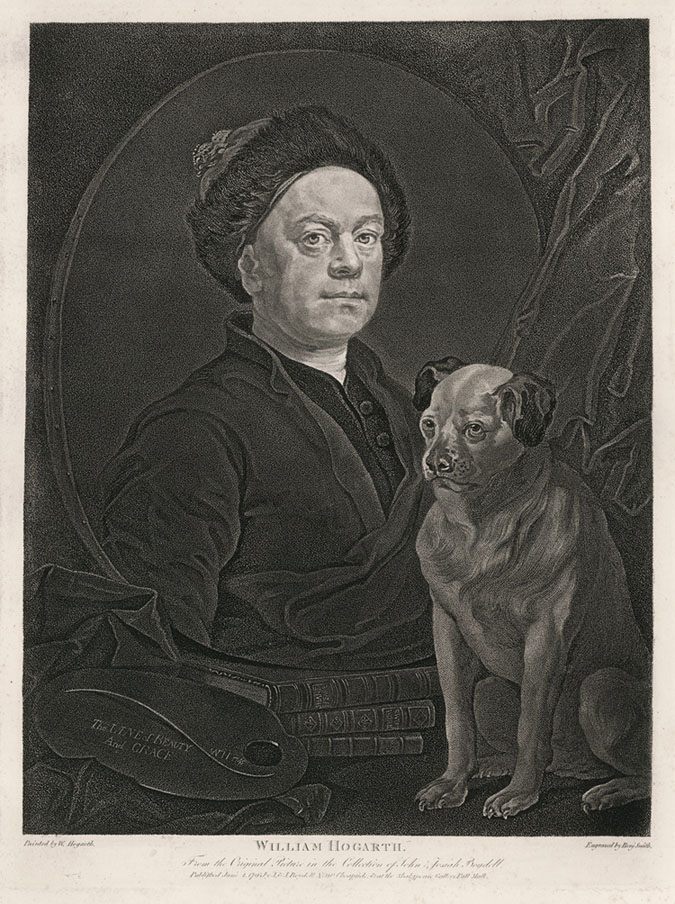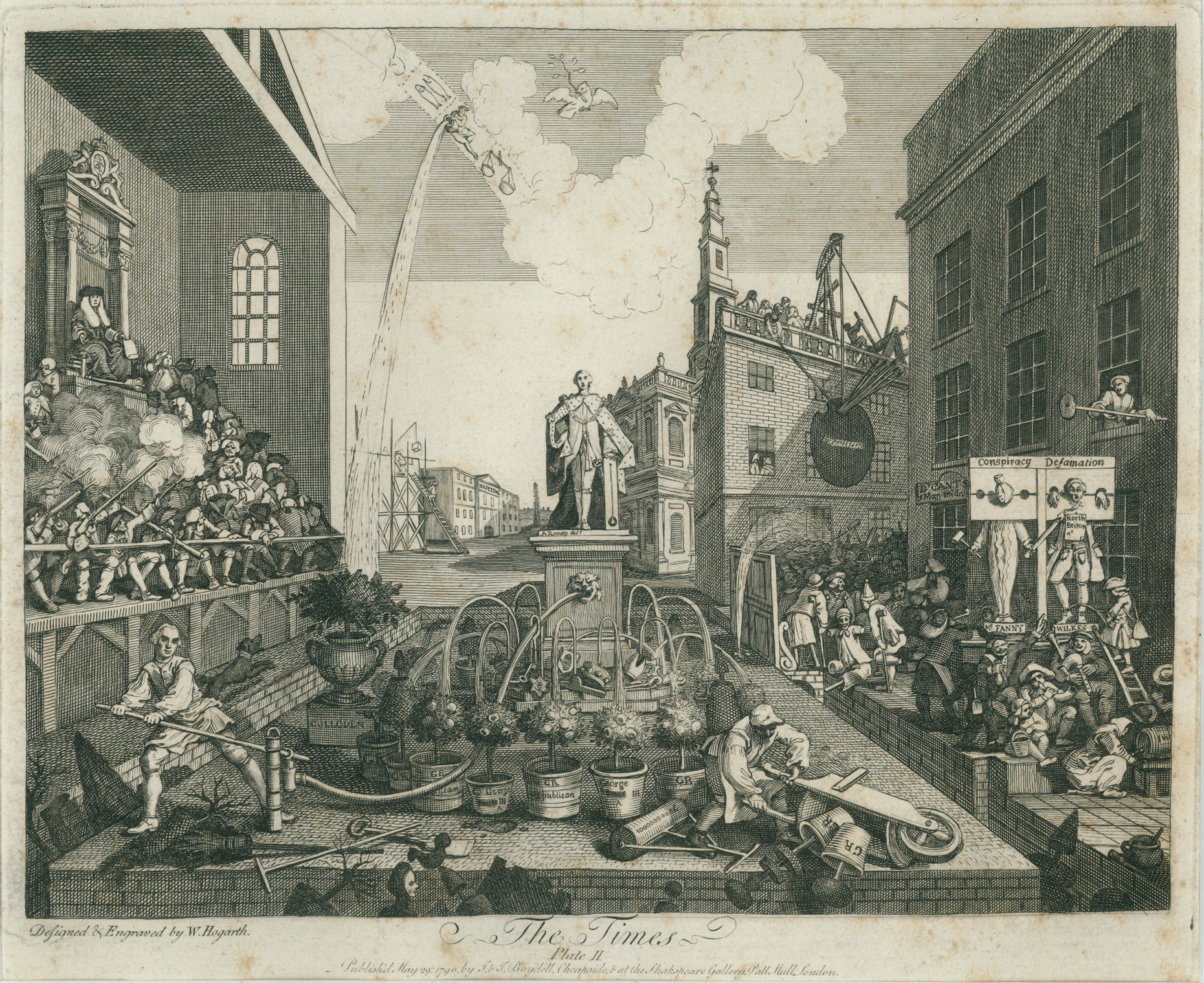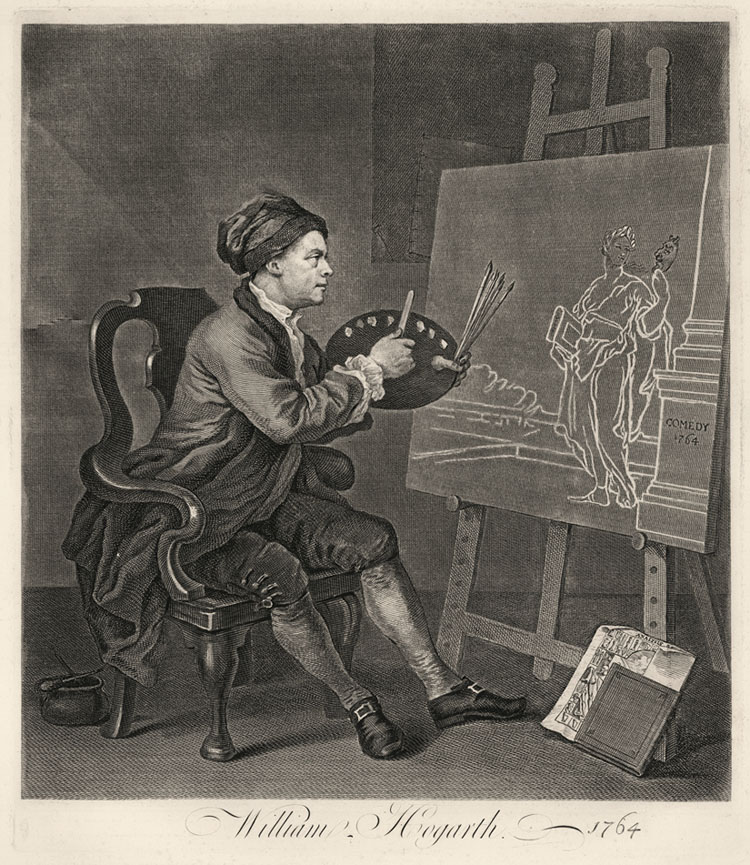Engraving, plate size 16 x 13 7/8 inches, after the self-portrait by William Hogarth, printed by James Heath, 1822.
William Hogarth
Engraving, plate size 15 1/2 x 11 3/4 inches, 1795, engraving by Benjamin Smith after the self-portrait by William Hogarth, published by J & J Boydell, Cheapside, London.

This is an original copper engraving by British artist William Hogarth. The title of this work is: The Times, Plate II. Created in 1762, this engraving is thought to have been brought by the artist's wife to Boydell of London for publication in 1790. This is the forth state of four. The image measures 9 1/8X11 7/8 inches, the overall sheet size is: 12 1/2X16 1/4 inches. This image was printed on an early laid type paper. Very nice condition but does have some unobtrusive foxing marks, mostly in the border area.
(information on both plates, I and II...)
"This pair of engravings have a complicated publishing history. Plate ‘b’ was unfinished at Hogarth’s death and it is unclear whether this first proof state was published by Mrs Hogarth late in life or as the first of the sequence of later states by Boydell after 1790. To further complicate the issue, the contemporary collector George Stevens (1736-1800) has written on his copy of this state that it was ‘taken during the life time of Hogarth’, but it was not until June 1781 that he (according to Malone’s letter to Lord Charlemont) ‘ransacked Mrs. Hogarth's house for obsolete and unfinished plates’, so perhaps the inscription may be taken with a pinch of salt. (sic) With The Times Plate I Hogarth took a decisive political, and at this time unpopular position to support the peace movement against the Seven Years' War (also called the French Indian War) spearheaded by King George III and his chief advisor, Lord Bute. Bute's opponent and leader of the Commons, William Pitt, supported the interests of the war and the economic profit derived from the colonial exploitations it permitted. In this first state Henry VIII (Pitt in later states) marches on stilts to fan the fires of war which the Union Officer of the King is trying to extinguish with a fire engine. William Beckford, the Lord Mayor and Pitt follower, who made a fortune through tobacco and sugar plantations in Jamaica, appears in the doorway on the left and points to a signboard advertising a naked Indian that reads 'Alive from America.' In the foreground women die of starvation in the street and a drunken fiddler plays his violin. Plate II of The Times depicts a more peaceful and prosperous Britain. Plants are nourished by water spouting from the monument of George III, with the elegant Lord Bute as the chief gardener of the State, controlling access to the King. A gigantic palette dangling from the facade of a newly-erected public building indicates that under the reign of the young King art flourishes. 'Ms Fanny' (a reference to the Cock Lane Ghost) and 'Wilkes', a fervent opponent of the King and Bute, appear in the pillory, while to the left those few members of Parliament who are still awake, including Pitt with bandaged legs, shoot at the dove of peace in the sky."

Copyright 2021· All rights reserved

